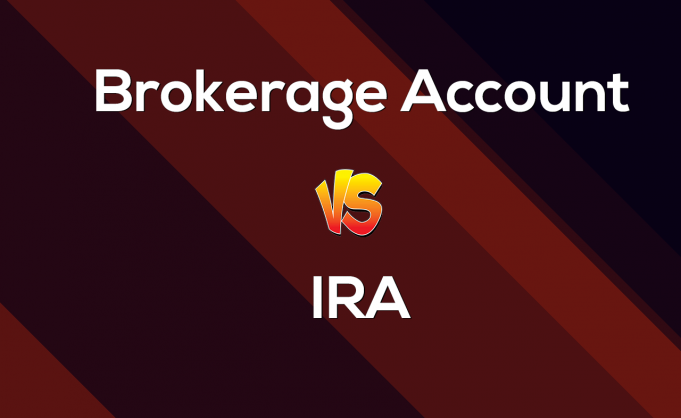Here, we are sharing with you the brief information about brokerage account vs IRA, and what the differences are between them.
What is a Brokerage Account and an IRA?
The organization that buys and sells assets for its clients is known as brokerage. Brokerage accounts are taxable after transactions, and one may face capital gain taxes as well. An IRA is an abbreviation for Individual Retirement Account. These accounts are eligible for claiming tax deductions. One might be taxed while making withdrawals. According to the Deloitte report on BA and IRA holders, around 17 million households have a brokerage account, and 3 million have IRAs. It has also observed that BA holders are from a high-income category people, and 2.8% have brokerage accounts
Why compare them?
It is important to compare both if you are doing financial planning. If you are into stock markets and you wish to invest, Brokerage accounts are for you. Term wise, IRAs will help you in long-term retirement goals whereas a BA is for short-term growth. Comparing both might lead you to think of opening accounts.
Types of Brokerage Accounts and IRA
Several account-types have different benefits and a few IRA’s are listed below:
There are three types of brokerage accounts based on liabilities, and payable and extra benefits are listed below:
- Cash account
- Margin account
- Options account
How to step up a Brokerage account:
To set up a Brokerage account:
- Decide the account-type and compare the cost.
- Check services offered.
- Choose the firm.
- Complete the application and add funds to your account.
- Surf and invest.
To set up an IRA
- Choose IRA account-type
- Choose the financial institution as a trustee
- Choose the fund type and make your portfolio
- Decide the investments and open account
- Fund it
Limitations
IRA
The contribution limit depends on the type of account.
For tradition IRA or Roth IRA
- Under 50 years of age: maximum $6,000/year
- Above 50 years of age: $1,000/year as catch-up contribution + $6,000 = $7,000/ year
For SEP or SIMPLE IRAs
- Self-employed or employed: 25% of Income or $56,000 lowest of anyone
For 401(k)
- Under 50 age: $19,000/year
- Above 50 age: $6,000/year as catch-up contribution + $19,000 = $25,000/ year
Brokerage accounts
There are no such limits, as these are taxable accounts.
Advantages & disadvantages of BA
The advantages of BA are as follows:
- No limits in investments and contribution
- Minimum distribution is not required
- No penalty during withdrawals
The disadvantages of BA include:
- It is taxable
- Capital gains tax
Advantages & Disadvantages of IRA
The advantages of IRAs are as follows:
- Tax-deferred growth in all accounts
- Tax-free growth for Roth IRAs also allows withdrawing after retirement and No RMDs
The disadvantages of IRAs include:
- Penalties on an early withdrawal
- Limit on investment choices and income limit on Roth IRAs
- RMDs applicable except Roth IRAs
Transferring
Steps involved to transfer one BA to the new BA:
- Decide the new brokerage firm
- Request for Transfer initiation form from the new firm
- Complete the form and send it to current brokerage
After reviewing and validating the transfer by the delivery firm. The receiving firm reviews and determines the transfer. After everything is approved, the delivery process is initiated.
Below steps are required to transfer one IRA to another:
- Contact your current plan administrator and request a transfer funds directly to new IRA plan.
- Withdraw all the funds and deposit them in a new plan in 60 days.









